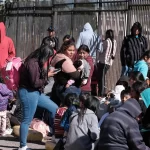Not long ago, I was talking to a friend of mine who is an Orchestra Director. At the time, he was conducting one that had musicians from more than 25 different countries and he had a philosophy about communication that I really liked: “what language do we speak between us?” And the answer was “music. This is a common language we all share in the orchestra”.
It was a great philosophy if you apply it to that context: reading a music score and playing it together. But think for a moment if we spoke a common language between nations: art. Wouldn’t it be easier to understand and get to know each other better, regardless of our country of origin?
Mexico and the US share a border and have a growing economic relation, trade flourishes and there are record imports and exports from both sides. But besides TV news and televised shows, do we really get to know each other? It is certain that if you ask an American about Frida Kahlo chances are the answer is “yes, I know her”; same way, if you ask a Mexican about Louis Armstrong, chances are of knowing who “King Louie” was.
A better knowledge through culture would make it easier to know each other better and understand just how rich both countries are, and the many things we have shared thanks the language of art. Just a few examples: Arizonan painter Ted De Grazia was a trainee with Mexican mural painters Diego Rivera and José Clemente Orozco and even exposed at Mexico City’s Palace of Fine Arts. American composer Aaron Copland went south of the border several times and wrote his symphonic piece “El Salón México” based on Mexican folk music. Its premiere took place in 1937 with Maestro Carlos Chávez conducting the Mexico Symphony Orchestra.
Likewise, in the early 20th Century, Mexican composer Julián Carrillo organized and was the director for the American Symphony Orchestra in New York. Mural painter José Clemente Orozco lived in the US for 7 years and did several murals in different states (California, New York, New Hampshire).
As you see, we’ve also had an historical inter-connection through art! But my examples are from the past. Now, with a border that is crossed by several million people every year in both directions, we may not realise that art also crosses it both ways and helps feed knowledge and common understanding on a daily basis. Music and art schools, galleries and museums still present works from American artists in Mexico and vice-versa, their counterparts in the US do the same with Mexican art here.
In Tucson, many artists and galleries present works by Mexican artists. The Consulate has also made an effort to show the diversity of Mexican art locally: opera, classical music, jazz, graphic art, sculpture and more. Last October, a band from Mexico City called Klezmerson played in Tucson and showed how a fusion of Jewish music from Eastern Europe (Klezmer) with Mexican rhythms and modern instruments can bring people from different origins to celebrate music and arts together.
This year the Consulate had an exhibit of works by a Mexican painter called Octavio Ocampo, who also studied in San Francisco and has made portraits of several American personalities. One of the works exposed was called “L.A. Spirit”, it was painted for the Olympics in Los Angeles in 1984 and included not only the American flag, but images of the Statue of Liberty and Olympic symbols: The Discobolus and some modern disciplines. By the way, for many years, Ocampo’s portrait of President Jimmy Carter was the only work of art by a foreign artist to be on display at the White House.
Everyday works are also a part of this common language, even if we don’t pay too much attention to it. Just like a Todd Williams’ sculpture embellishes a public space in Mexico City, one by Mexican modern artist Ariel Díaz decorates another one in Tucson.
It is probably time to start speaking in art to each other, and spread this common understanding between our nations, don’t you think? If you agree with me, then there is this challenge for the coming months:
Read at least one book by a great American writer and one by a Mexican one, it can be a novel, poetry, a play, and you can choose from many: Ernest Hemingway, Mark Twain, Harriet Beecher Stowe, Scott Fitzgerald, John Steinbeck, to name but a few Americans; Carlos Fuentes, Octavio Paz, Juan Rulfo, Salvador Novo, Jorge Ibargüengoitia, to give a few examples of Mexican ones.
Listen to at least one different work by three different composers from each country. Here are some obvious examples: Aaron Copland, George Gershwin, Leonard Bernstein, Samuel Barber or even John Cage (US); Carlos Chávez, Manuel M. Ponce, José Pablo Moncayo, Silvestre Revueltas or Samuel Zyman (Mexico).
Look on the net for modern paintings of maestros from both countries (regardless of the style): Andy Warhol, Roy Liechtenstein, Jasper Johns, Ted De Grazia (US); Leonora Carrington, Manuel Felguérez, Rafael Coronel, Remedios Varo (Mexico).
Look for two of the greatest opera singers in the world and listen to them: American soprano Barbara Hendricks and Mexican tenor Rolando Villazón.
Look on the internet for sculptures from American and Mexican artists. For example, James Earl Fraser, Georgia O’Keeffe or Alexander Calder (US); Sebastián, Javier Marín or Mathias Goeritz (Mexico).
Listen to a jazz piece by an artist from each country. American jazz musicians are many and as big as their names and music. Look up for Mexicans like Eugenio Toussaint, Juan José Calatayud, Hiram Gómez, Tino Contreras, Aguamala, Magos Herrera, Calacas Jazz Band.
…by the way, besides music my friend, the orchestra director also speaks Dutch, French, English, German and Spanish.
Enrique A. Gomez Montiel















More Stories
PHOENIX ART MUSEUM PRESENTS BARBIE
St Patrick´s Day
Spring Equinox
MARCH 8 INTERNATIONAL WOMEN’S DAY
DO YOU KNOW YOUR BIRTH FLOWER?
Proud Parents – Anna and Ben